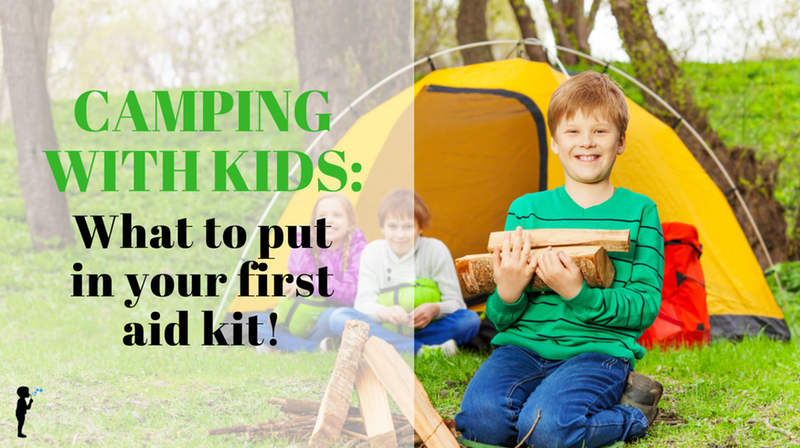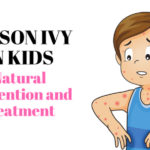
Camping with kids: what to put in your first aid kit!
For my kids, there’s nothing better in the world than camping with their buddies. I’ve always brought a first aid kit with me on hikes and camping trips, but the kit seems to get bigger every year. A lot of these things are not “natural” but are on the list because you never know when you’d need them in an emergency! Here’s what I bring with me.
My “essentials” first aid kit: In my day pack, for any excursion away from home base
- Water – You never know just how long you’ll be out; always bring ample water for everyone in the family. I had my son start carrying his own water when he was 3, just to get him in the habit.
- Food – bring more than you think you’ll need, just in case.
- Bouillon cubes – compact and light weight, these can re-hydrate or serve as emergency rations.
- Duct tape, wrapped around my water bottle for convenience. I’ll never forget the time my friends and I found a sweet swimming hole off the trail a bit. (This was pre-kids, so the rules were different). My best friend sliced her foot open on a broken can hiding in the water. My first aid kit and duct tape were a life saver. Since all I had was my small travel kit, I couldn’t patch her up properly; that would have to wait till we got back to camp. So to get her back to camp, I had to close the wound temporarily, which I accomplished with Steri-Strips, gauze, and, you guessed it – duct tape. It can also work wonders for ripped clothes and tents!
- Steri-Strips – basically a souped-up bandage. They can hold a wound together that’s a little too big for a band-aid, and a little too small to need glue or stitches.
- Saline solution ampules – Sterile saline is a great way to clean out a wound. I keep a large saline solution at home base, but it’s a bit too big to bring on outings. Pack a few of these ampules, and you’ll have enough to tide you over till you get back to base camp.
- Antibiotic ointment – this is something I rarely use, but when you’re not sure you’ve gotten a wound clean, or if you have a bad burn, it’s absolutely necessary to prevent infection.
- Hydrocortisone cream – another one I almost never use, but when you’re away from medical care, and a rash is itchy and spreading, it will be essential.
- Gauze – both regular and non-stick. The regular stuff is great for cleaning a wound, and the non-stick is great for protecting a clean wound. Regular gauze is also great for stopping bleeding and for and sopping it up.
- Bandages, in various sizes
- Nitrile gloves – they take up almost zero space and keep you and the person you’re helping from sharing illnesses
- Waterproof adhesive first aid tape – for taping gauze on to cover a wound.
- Tweezers – for removing splinters and other foreign bodies.
- Small scissors – for cutting gauze rolls, first-aid tape, duct tape, and who knows what else.
In a bigger bag, to keep at home base:
(NOTE: you may want to pack some of these items in your day bag, depending on the degree of danger of your trek.)
- More Steri-Strips
- Big container of Saline Solution – for washing out wounds
- More gauze
- More nitrile gloves
- Thermometer – sometimes it’s nice to know if someone really has a fever, and how high it is
- Children’s Ibuprofen or the equivalent generic – to bring down a fever if you need to (read about why you probably do NOT need to here), or for minor aches and pains. Don’t forget the dosing chart!
- Children’s Zytec or the equivalent generic, or your favorite children’s antihistamine; there are several other antihistamines you can choose from. Ask at your doctor’s office if they have a preference. Also, if you have a child under 2 years of age, you’ll need to discuss emergency use of an antihistamine, and how to dose it. If your child has an allergic reaction to something, you’ll need to dose the antihistamine and head to an urgent care center or ER (allergic reactions can stop and then come back stronger a little while later). Don’t forget the dosing chart! Pro-tip: the tablets take up less room than the liquid!
- Eye drops – for foreign bodies and for dry eyes, or you can just use your saline solution.
- One or two tampons without applicators – these work wonders for sopping up a nose bleed.
- One or two maxi pads – for controlling bleeding from larger wounds.
- Hand sanitizer – because you can’t always wash when you’re camping
- Baby wipes – because they’re unbelievably helpful, in many different situations
- The number for Poison Control – 1 (800) 222-1222; post this on your refrigerator at home too!
- Burn treatments – For minor burns (like sunburns) Aloe Vera gel is somewhat helpful, but I prefer a cream or salve with lavender and St. John’s Wort; I find this to be more effective and take up less space in the bag. For more moderate burns, you’ll need to cool the skin down before treating; this burn dressing is compact and travels well. Moderate burns also need antibiotic cream to prevent infection. For a severe or questionable burn, cool it down on the way to urgent care or the ER.
- Herbal salve – get something with comfrey, calendula, vitamin E, and chickweed; use it for minor scrapes, irritations, and itches (the chickweed is specifically for itch).
- Diarrhea treatment – I never use medication to stop diarrhea. But if you’re in the woods with no toilet, and can’t stop the flow even to get yourself in the car and home, well, that’s a good time to take an anti-diarrhea product! If you decide to stick it out and forgo medication, remember that diarrhea can dehydrate a body rapidly; use bouillon cubes to keep hydrated, and be sure to follow the BRAT diet as best you can, with the addition of bouillon of course. The BRAT diet is bananas, (white) rice, applesauce, and (a little burned) toast (white bread); all these foods help stop you up. While we’re on the subject, check out this post for a natural diarrhea treatment.
- Sunscreen
It’s not always about what’s in the bag:
I’ll never forget hearing a story about a young (and fit!) couple who took their baby on a backpacking trip. They were at least 8 hours into the woods and settled in for the night when the baby started turning blue. They panicked for what seemed like an eternity, but was probably only about 15-30 seconds. After that, baby regained color and was fine. Their baby had a classic breath holding spell. Fortunately, baby did not have another one on that trip, and even more fortunately, the mom was familiar with breath holding spells. Once the panic subsided, she was able to recall the facts about them, and the family was able to spend that night in the woods without further event or paranoia.
The point is, you can have all the best equipment packed into your first aid kit, but without some training and know-how, that kit won’t help you when you need it to. So, take a first aid class. Ideally, take a first aid class that’s geared toward wilderness medicine. Bring your notes and a book with you on your trip. Practice scenarios at home. This is great knowledge to have anyway, and we can never have too many first aid trained helpers around!
Also, make sure that someone who’s staying at home (or home base) knows where you are going and when to expect you back. This goes for the camping trip in general, but also for any specific hikes or treks. If your party goes missing, or doesn’t return home on time, people need to know where to look for you.
The non first-aid essentials:
There are a few other items I’ve taken to carrying with me, or having my kids carry, just in case.
- Safety whistle – both my kids wear one for hiking. I remind them before every hike not to blow the whistle unless it’s an emergency.
- Compass – just in case you get lost. Bring a trail map too, if there is one.
- Emergency blankets and emergency ponchos – if you get caught in a surprise storm, these will be essential, and they are small and light
- Waterproof matches – just in case you’re lost for the night and you need a fire to stay warm, plus they’re small and light
- Light, preferably a head lamp – again, just in case you’re out later than you intended
- Toilet paper – because who wants to ever be without it?!
- Bug repellent – since I like to use natural stuff, I bring several varieties; herbal spray, candles, and mosquito repellent incense sticks. I also bring the real deal non-natural stuff, just in case.
- Mirror – for signaling, but also handy for treating your own eye problems.
- Small knife or multi-tool – because you just never know how this will come in handy.
- Water purification system – there are several different options. It won’t take up a lot of space, and since we die quickly without water, it’s a must have. Here’s an example and here’s another.
- A way to boil water, in case you need to make bouillon.
Note that this post is intended to guide the average family with kids on a run of the mill camping or hiking trip, not hard core outdoor enthusiasts! If you’re going for serious adventures, you are looking at the wrong list.
Have fun in the woods!

